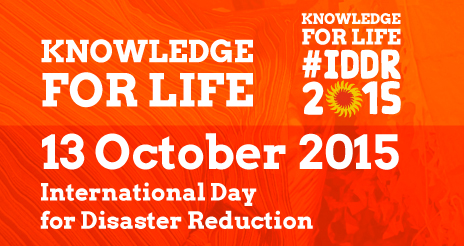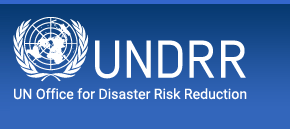National platforms will facilitate the allocation of resources of UN agencies that are not represented in-country and advocate for the work of the UN in support of national goals.
Disaster risk reduction is a country-specific long-term process. Its success relies heavily on sustainability, national ownership and leadership of the process. Therefore, each country needs to determine for itself how best to approach national platform establishment and activity plans depending on the prevailing economic, social, political and ecological circumstances. In most situations, national platforms will be developed in the context of existing mechanisms and processes. In some cases, an existing committee or fora with a disaster reduction mandate can take over the platform role. National platforms through their coordination, exchange, lobbying and awareness raising roles, contribute to strengthening present structures or national systems, institutions and processes,. Existing disaster risk reduction national groups or committees will also have the opportunity to increase their access and linkages with other relevant bodies nationally, regionally and globally.
A “blueprint” approach for national platforms for disaster risk reduction is neither possible nor desirable. However organized, what is important is the consistent application of the major guiding principles and ensuring that economic, social and environment context are being addressed. Additionally, national platforms must be flexible. Dynamic national situations, mainly in terms of political and economic factors, also require that they be responsive and adaptable to change.
The Hyogo Framework provides a reference for assessing and monitoring achievements on disaster risk reduction, thus facilitating the work of national platforms when undertaking roles such as:
- establishing existing baselines;
- identifying existing trends;
- benchmarking progress;
- ascertaining challenge areas and concerns;
- redirecting and refining efforts;
- exchange lessons learned and best practices;
- setting forth accepted targets;
- establishing credibility across different institutions and interest groups; and
- recording and reporting.
National platforms for disaster risk reduction should demonstrate added value to all parties and should as much as possible:
- Reflect shared strategic and pragmatic vision;
- Build on existing processes and strategies and be nationally owned and driven;
- Be spearheaded by a strong representative of an institution;
- Ensure the widest possible participation;
- Anchor the development and tasks of the platform in sound technical analysis;
- Be integrated and balanced across sectors and territories;
- Link national and local priorities and actions;
- Build mechanisms for monitoring, follow up, evaluation and feedback;
- Give priority to education and public awareness; and
- Ensure continuity of the platform development process ultimately strive towards a national system for disaster risk reduction.
|
Major requirements:
- Work towards clear and pragmatic vision of disaster risk reduction at national and community levels;
- Strong national ownership ; Adequate consultation in identifying problems and areas of priority;
- Strong individ ual and institutional commitment.
|
|
Major guiding principles for effective platforms include:
- Disaster risk reduction should be regarded as a national and cross cutting issue within sustainable development;
- National platforms should utilize a participatory process that includes multidisciplinary and multisectoral perspectives and actions, linked to existing systems;
- National platforms should influence positive changes through concerted and coordinated efforts particularly in policy, planning and decision-making process
- National platforms should encourage national adaptation and ownership of the Hyogo Framework.
The ways and means by which these principles are realized will be case-specific, and tailored with and by each country, seeking international support, if needed. Where applicable, the UN Country Team will support and participate in national platforms for disaster risk reduction .
Four processes to realize the principles:
- Political process involves ensuring strong political commitment from the top leadership;Technical process involves various activities such as developing knowledge bases on disaster risk reduction, developing a methodological framework for the national platform including a set of disaster reduction indicators;
- Participatory process implies the full involvement of relevant groups, including government, private sector, NGOs and academic organizations;
- Resource mobilization process involves the availability of resources required for the development of national platforms for disaster risk reduction and its planned tasks.
|
|
The role of the ISDR—its secretariat and Inter-Agency Task Force on Disaster Reduction—in supporting national platforms
The ISDR[4], primarily through the UN Resident Co-ordinator system (RCs) and the UN Country Teams (UNCT) but also through individual IATF/DR members and regional bodies, can play a critical advocacy, catalytic and facilitating role in the process of establishing and strengthening national platforms for disaster risk reduction under national ownership and leadership. It can likewise support the development of national baseline assessments, national programmes or action plans, and promote/mainstream risk reduction as part of development polices and programmes, as stipulated in the Hyogo Framework (see paragraph 30).
The role of the ISDR secretariat is to support this work mainly through its regional outreach programmes and units, through the following types of activities:
- Assist the process of establishing national platforms by providing national authorities with advice, contacts, information and, when relevant, cost-sharing based funding, working closely with key collaborating organizations;
- Support partners with the sevelopment of guiding principles for disaster risk reduction, including the preparation of sector-specific policy briefs, guidance for the preparation of baseline assessments and indicators for progress reporting, awareness raising material as well as the compilation of country experiences and lessons learned, and make them easily available to national authorities, national platforms and other interested parties, using the UN system and regional networks;
- Identify information gaps and outsource the elaboration of specific studies and policy briefs to national platforms capable of preparing them, for use regionally or globally;
- Facilitate exchange of information, know-how and expertise through the ISDR website and information products;
- Provide opportunities and foster collaboration and dialogue among national platforms regionally, and among platforms from different regions (promoting bilateral cooperation and the wide exchange of experience and information among national platforms);
- As the designated UN focal point for disaster risk reduction, serve as a networking hub and liaison within the UN system, in which the IATF/DR is the main instrument for coordination. Regional coordination platforms and networks for disaster risk reduction are increasingly being developed; these will be particularly valuable in supporting national platforms;
- Work in partnership with national platforms on resource mobilization for disaster risk reduction, nationally and regionally.
Actions by UN Resident Coordinators and UN Country Teams to promote appropriate national platforms
One of the critical objectives of the UNCT articulated through the Common Country Assessment (CCA) and UN Development Assistance Frameworks (UNDAF) is to strengthen national capacities in line with the principles of national ownership and leadership. By supporting the creation or strengthening of national mechanisms, such as national platforms for disaster risk reduction, the UNCT and UN RCs can promote and enhance effective national disaster risk reduction capacity. Specific actions recommended for the UNCT include:
- Strengthen awareness of roles and responsibilities among all stakeholders and assist them building the skills and capacities to carry out assigned functions.
- Assist with assessing existing capacities, gaps and needs upon request from a country authority.
- Identify relevant actions to assist with the implementation of the Hyogo Framework.
- Assist with setting-up national strategies, policies and plans pf action and programmes disaster reduction and to develop the institutional and technical capacities in the field of disaster reduction, as identified in the Hyogo Framework.
- Establish links and exchanges between different levels of action (local and intermediary as well as national, regional and international) or foster collaboration and dialogue among national platforms members.
- Strengthen decentralized local governance systems for disaster risk reduction and the clear identification and allocation of decentralized responsibilities.
- Ensure the link between national needs and UN assistance in disaster risk reduction at national and community levels.
Official recognition of national platforms for disaster risk reduction
The establishment of a national platform can be announced directly to the ISDR secretariat in Geneva or ISDR regional programmes in writing, preferably through the Ministry of Foreign Affaires, or channelled through the UN RC. The notification should include the following information: (a) name of the national platform; (b) contact information; (c) composition of platform, (d) focal point and her/his contact information, (e) any relevant documentation explaining the functioning or status of the platform (if existent).
Officially designated national platforms express the interests of various national and local stakeholders in disaster risk reduction. Through the legitimacy conferred upon them by their respective governments, national platforms can serve as effective instruments for promoting disaster risk reduction at the international level based on their individual experience and in cooperation with the ISDR Inter-Agency Task Force on Disaster Reduction, the ISDR secretariat and other ISDR partners.
The information should be communicated to:
UNDRR
Palais des Nations
CH-1211 Geneva 10
Switzerland
Fax. : +41(0)22 917 05 63
e-mail: isdr@un.org
[1] Other collaborating partners included: ProVention Consortium, United Nations Volunteers, UN-Habitat, ISDR secretariat.
[2] Multidisciplinary and multisectoral perspectives: Refers to conventional economic sectors and/ or ministerial or departmental divisions within the public sector, such as agriculture, finance, health, education etc, and disaster management institutions and systems. These vary in each country.
[3] This refers to the five main stakeholder groups of a national community, which are public sector (government and statutory bodies), private sector (profit-oriented enterprises), NGOs and other civil society (including individual community leaders), academic and research institutions and the media (Conventional definition of "multistakeholder" taken from IUCN's National Conservation Strategy (NCS) model).
[4] ISDR secretariat and Inter-Agency Task Force on Disaster Reduction |
 International Day for Disaster Reduction #DIRD 2015 Knowledge for Life
International Day for Disaster Reduction #DIRD 2015 Knowledge for Life